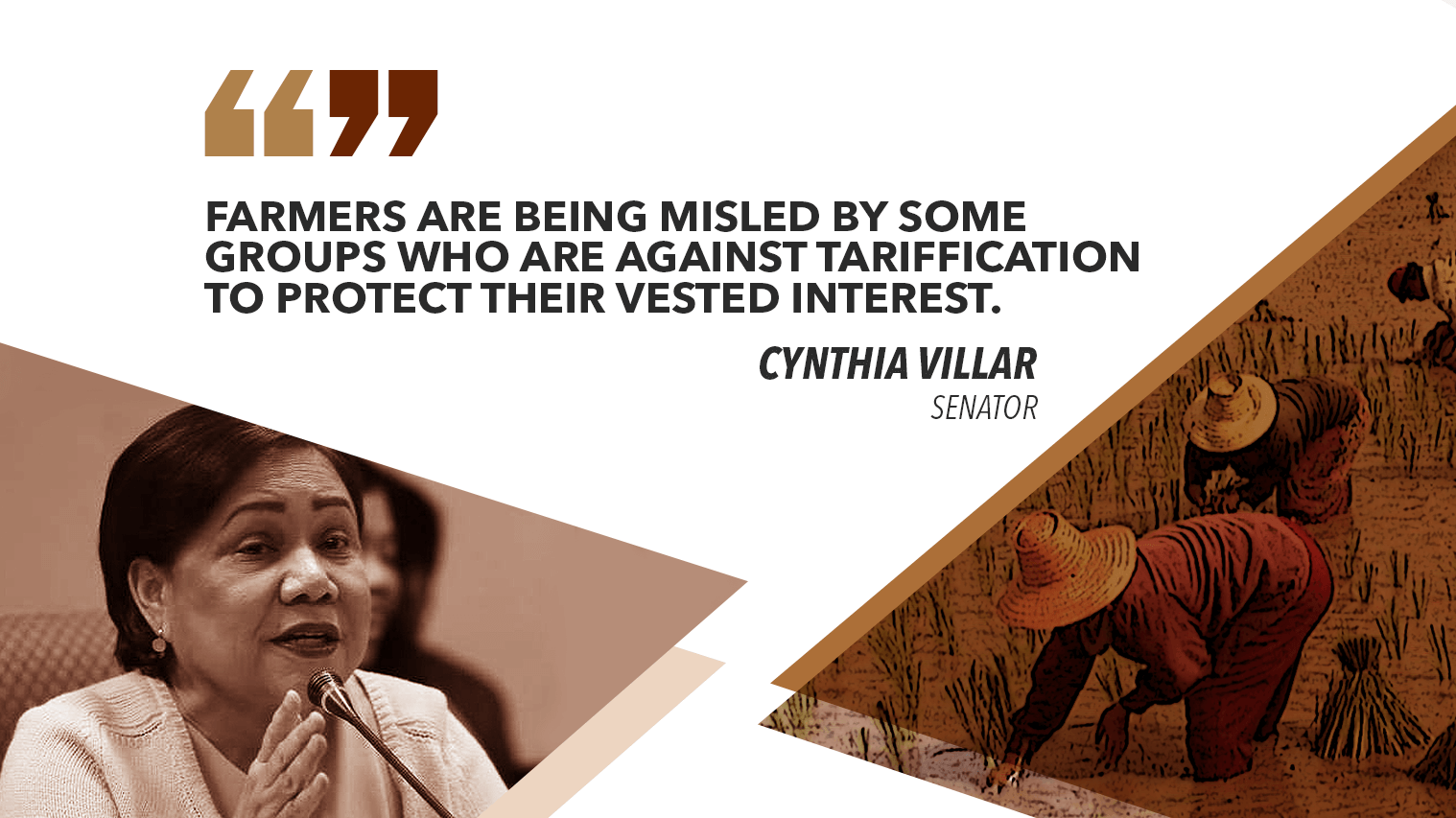Senator Cynthia Villar said the rice tariffication bill will protect Filipino farmers from the influx of imported grains as a result of the removal of quantitative restriction.
Villar, chair of the Senate committee on agriculture and food, said farmers were being misled by some groups who are against tariffication to protect their vested interests.
“Unlike claims that tariffication will result to flooding of imported rice to Philippine market, this will make such importation beneficial to local rice producers,” the seasoned legislator told farmers during the Patimyas Ani Festival in Quezon, Nueva Ecija.
The rice industry, the lady senator explained, is set to be liberalized following the expiration of quantitative restriction on June 30, 2017.
“Pag nag-liberalize ka nang walang tariff, kawawa ang mga farmers (When you liberalize without tariff, the farmers will suffer),” she said.
“When you liberalize without tariff, the farmers will suffer.”
“Di ba kaya mo tina-tariff ang imports para protektahan yung local producers mo? (You impose tariff on imports to protect the local producers, isn’t it?),” Villar added.
She said with the tariffication bill comes the annual allocation of P10 billion under the Rice Competitiveness Enhancement Fund (RCEF), which is now included in the 2019 national budget.
The amount will be channeled through the Philippine Center for Postharvest Development and Mechanization (PhilMech), Philippine Rice Research Institute (PhilRice), and Technical Education and Skills Development Authority (TESDA) and among other agencies to upgrade farmers’ technology and know-how.
The fear over importation, Villar explained further, appears to be baseless since rice supply is actually limited in the world.
“So over importation will only lead to increase in prices of the staple which would also benefit farmers,” Villar said.
“Over importation will only lead to increase in prices of the staple which would also benefit farmers.”
She stressed that the government’s grant of free irrigation to farmers, mechanization and use of improved inbred rice varieties will cut production cost.


